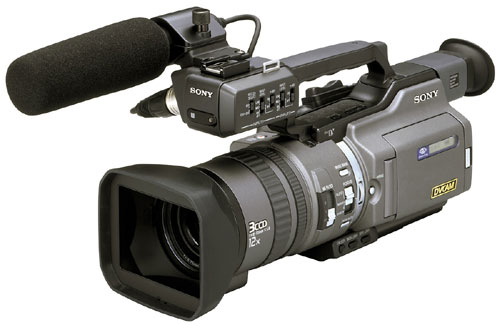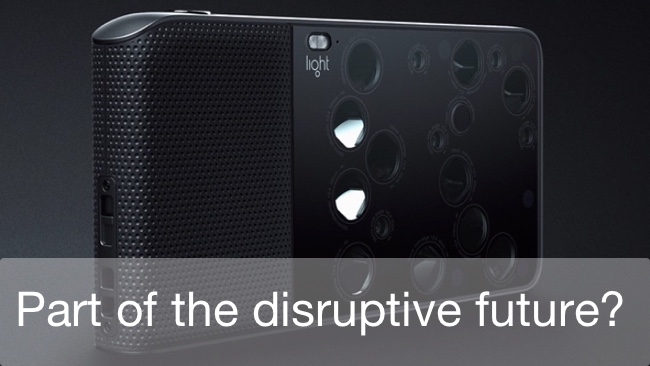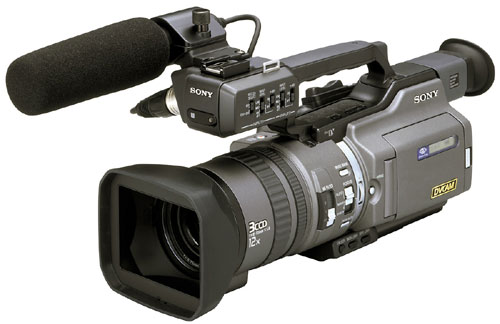
 The Light L16 - disruption is coming
The Light L16 - disruption is coming
While the industry is concentrating hard on a 4K and even 8K future, it probably seems like we've done this sort of thing before. And we have. But there are disruptive technologies looming that could impact our industry in rather more profound ways.
SD to HD, HD to 4K, 4K to 8K…
For those with camera or editing experience stretching over a decade, the industry's current fixation on 4K (as 8K looms on the horizon) may seem like more of the same. Once again, we've found ourselves in a platform change dominated by new resolution standards. Once again, professionals are trying to gauge the right time to jump into 4K acquisition and workflow - that is, if they haven't made the leap already. And once again, we're embroiled in long conversations about new compression schemes, storage for all this new 4K footage and efficient and cost-effective ways to manage it all.
As long-time film professionals, it's only natural to experience a bit of deja vu (or glitch in the Matrix, if you prefer), but perhaps we should take a step back and really consider what's happening here, at this moment. Yes, when it comes to day-to-day workflow and professional concerns, we are indeed replaying some version of the past. Anytime a new resolution standard is introduced, it will bring similar concerns as the resolution standards that preceded it, along with similar solutions. However, we are at a juncture in the history of camera development so fundamentally different than what has come before that our industry, even the notions of 'video' and 'film', will transform in unpredictable and disruptive ways.
Telling question
About 14 years ago, when I was in my first year of the Masters film program at USC, I cut my teeth on that early range of 3-chip, prosumer fixed-lens cameras that have become part of videographer lore.
 Remeber the Sony PD150?
Remeber the Sony PD150?
The school provided Sony PD-150's, but it was common to shoot our crude shorts on Canon XL1's and, later, the Panasonic DVX100, which was the first camera in its class to feature 24P recording. These cameras all recorded video to small format miniDV tapes (I still have a shoebox of them, somewhere). Even though these cameras only captured in standard definition, storage was a huge issue and a limiting factor in post, because our SCSI removable drives (each student got one) held less video than a $10 SD card of today. I don't remember the exact amount of storage, but recall that it kept us from just 'rolling on everything', which in hindsight, was probably a good thing.
One of my more ambitious classmates boasted about his plans to shoot an upcoming personal project in high definition, free from faculty constraints and storage limitations. He went on to outline his storage plan for post, the centerpiece being a 4 terabyte RAID array. Then, another classmate asked him a question that I'll never forget:
"What is a terabyte?"
In the 14 or so years since, we've all learned what a terabyte is. Some of us may be pondering the right time to amass a petabyte of storage (that's 1000 x terabytes).
Better norms
Consider this a reminder that the things we take for granted now were once pretty revolutionary additions to the cameras and workflows of yesteryear. I remember the first time I used a camera that recorded to SD card. Coming from acquisition on miniDV, I was skeptical that a flimsy, plastic 1-inch by ¾-inch card with exposed terminals could reliably capture and store video footage in a newfangled file-based scheme. Now, nothing could be more normal than popping in an SD card (or a higher-end, proprietary equivalent) into a camera. As cameras have matured, this and a myriad of other changes have incrementally improved workflows and the image quality of footage, if not always the experience of operating a camera.
It's easy to forget just how far we've come in a relatively short period of time because these conveniences, at their best, slot so well into our workflows that they quickly become part of the status quo. Even the larger, more profound changes, such as the movement from one resolution standard to another, feel like old-hat by now. However, just five years ago, standard definition cameras were still in wide use. At the beginning of last year, there were only a handful of 4K camera options available. Today, you can find 4K video recording in cameras of all sizes, prices and form factors; it's no longer news if an upcoming camera is announced featuring 4K video recording. In fact, it's currently more newsworthy if a professional level camera doesn't shoot in 4K, as there is usually a story in the rationale to stick with HD.
As we've stated in a recent article, 4K is now the accepted norm for cameras (and televisions). And the 'norm' is what, as professionals, what we rely upon to do our jobs: standards, best practices, trusted equipment and fellow professionals head the list. So, again, it's only natural that we have a certain amnesia regarding how the current norm came to be, since the norm equates to 'things I don't have to worry about - they just are what they are'. But a whole new crop of technologies, many from outside of our industry, have the potential to transform the norm into something that's presently unrecognizable.
Gathering disruptions
At RedShark News, we focus on the technologies, products and workflows that matter to our professional readership. However, we also cover technologies at various stages of development that may concern image professionals of the future. Some of the following technologies are just around the corner; others are just specks on the horizon. But, each of these represents something more substantial and disruptive than the incremental changes of the past.
HDR - High dynamic range video makes this list. It could be claimed that HDR more of an incremental change, but it's one with a profound effect on the viewing experience. Dolby has been demoing its impressive Dolby Vision system for over a year, which prompted our Editor-in-Chief to declared HDR video as "the biggest advance in video for ten years." After viewing the Dolby Vision demo myself, I share David's belief in HDR. The vibrant colours and wide brightness and contrast ranges delivers a different, more emotional experience that puts non-HDR displays to shame. Of course, in order to impact how we make content, there needs to be a consumer ecosystem in place to support HDR adoption. We are at the nascent stages for living room HDR content, as only a few outlets even offer HDR video and most currently-available 4K sets don't have the HDMI 2.0a ports necessary to accept HDR signals. Expect HDR to be one of the features that differentiates premium 4K televisions with mid-and-low tier models, at least in the early-going, and a trickle-down through the product lines to follow.
Computational Photography - Increasingly, we're seeing new cameras increase the number of image sensors and lenses for specific purposes, such as virtual reality. Yet, there's another segment of imagers that use the multiple sensor/lens combos to allow adjustments after the fact that would have been unthinkable ten years ago. We've all heard of the Lytro camera and its light field technology, which makes changing focus after a picture has been taken a reality. A new entrant into this field, the Light L16, aims to take the Lytro concept several steps further, by implementing 16 sensors/lenses and create composite 52 megapixel images with the advantage of adjustable focus and depth of field. (It purportedly also shoot 4K video). This technology also carries with it the likelihood of capturing more metadata, especially depth information. As this technology matures, its professional usefulness will grow and it's only a matter of time before we begin to feel its impact.
Virtual and augmented reality - It may be debated exactly when virtual reality and its sister tech, augmented reality, will arrive as a consumer force, but even the most ardent naysayers would probably admit that it's a question of 'when', not 'if'. VR and AR may be the technologies that most directly challenge our present notions of 'video' and 'film', as they introduce almost limitless possibilities for interaction with content and other users. There aren't many consumer VR devices available (outside of Samsung Gear VR and Google Cardboard), but much more sophisticated systems are slated to debut in 2016, with the big names gobbling up tech startups for hand and eye gesture recognition technologies for future device iterations. Presently, there is a big push for VR content and equal push for VR camera solutions from the likes of GoPro, Jaunt VR and even Nokia. As we begin to answer what types of VR content consumers prefer, VR and AR content development may mirror game development more so than film production, yet there will be a massive overlap of opportunities for current film pros, especially those who don't mind learning a few new skills.
To boldly go…
Of course, you're probably already familiar with HDR, computational photography and VR, at least as concepts. But there's another range of technologies, set further into the future, that represent radical reimaginings of the way we manipulate and interact with image based media.
Real-time object detection - It's a new field of study for video, with efforts to advance the ability to automatically, algorithmically detect not just faces, but any physical object that matches with what's in the database. The next step in real-time object detection is real-time object replacement, similar to what you see in some of Hollywood's own cinematic speculations on the future of video broadcast technology.
Holography - True consumer applications of advanced holographic technology are maybe a decade away, but scientists are currently solving some of the tech's biggest issues. Holography has come a long way since we ran our first article covering its advancements. In a little under three years, we've gone from celebrating resolution increases to competing designs that create safe-to-touch holograms that you can actually feel.
Femtophotography - This is probably the most advanced technology mentioned in this article. Femtophotography works be shooting individual photon packets and measuring the light information as reacts to its environment. Through this method, MIT researchers have developed prototypes that shoot trillions of frames per second, with a recent camera capturing the speed of light. Beyond capturing video at seemingly impossibly slow speeds, femtophotography unlocks other amazing possibilities, such as capturing the scene around a corner or even seeing inside our bodies without the use of X-rays.
These technologies may seem like science fiction, more befitting a discussion on a Star Trek fan forum, but they are real and they are coming...eventually. In the meantime, RedShark News will continue to cover what's important to the day-to-day workflows of video professionals. However, every once in awhile, we'll tap you on the shoulder and remind you to lift your eye from the EVF, to stick your head out of the editing bay, and consider the groundbreaking technologies that will probably arrive a little sooner than you think.
Tags: Technology


Comments